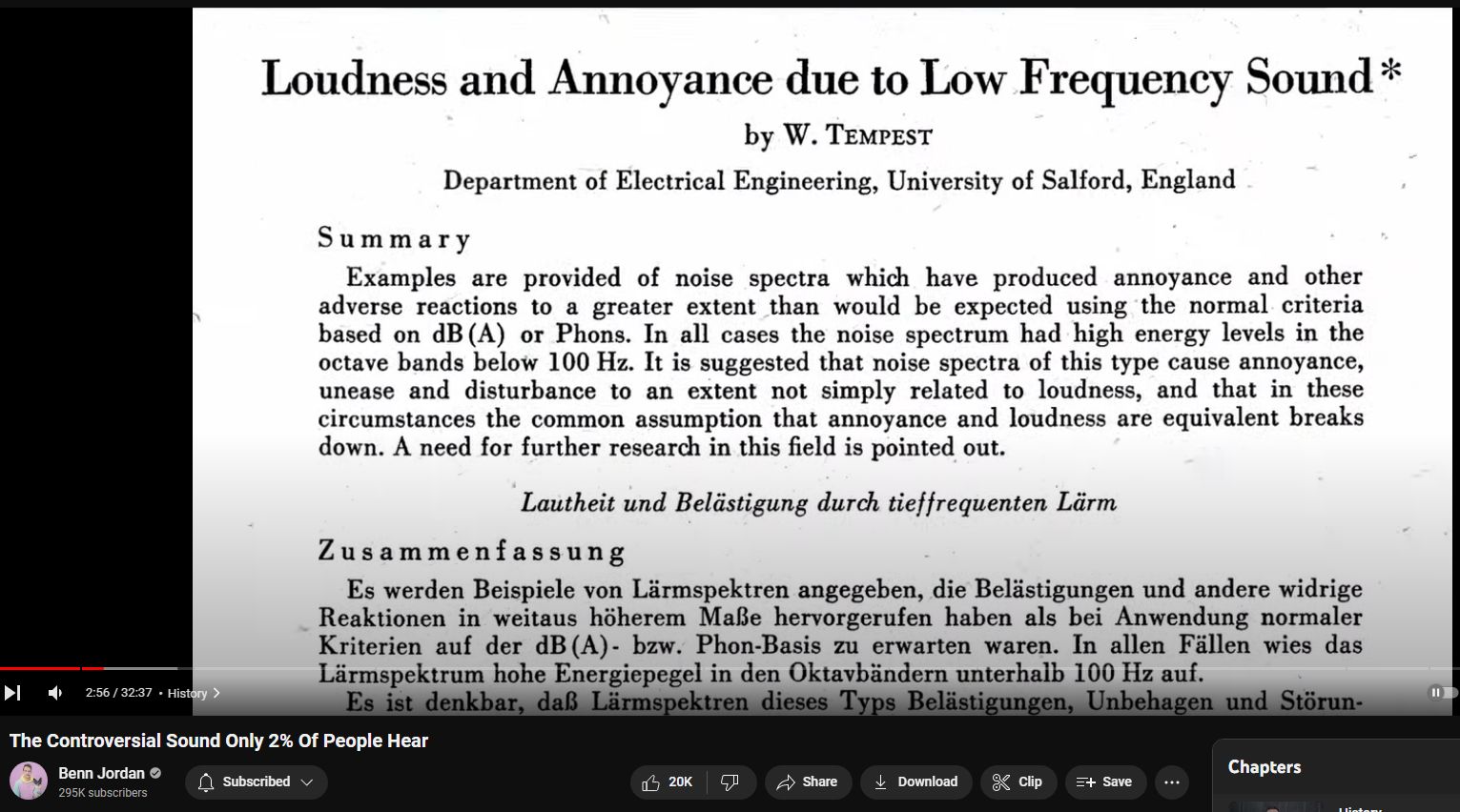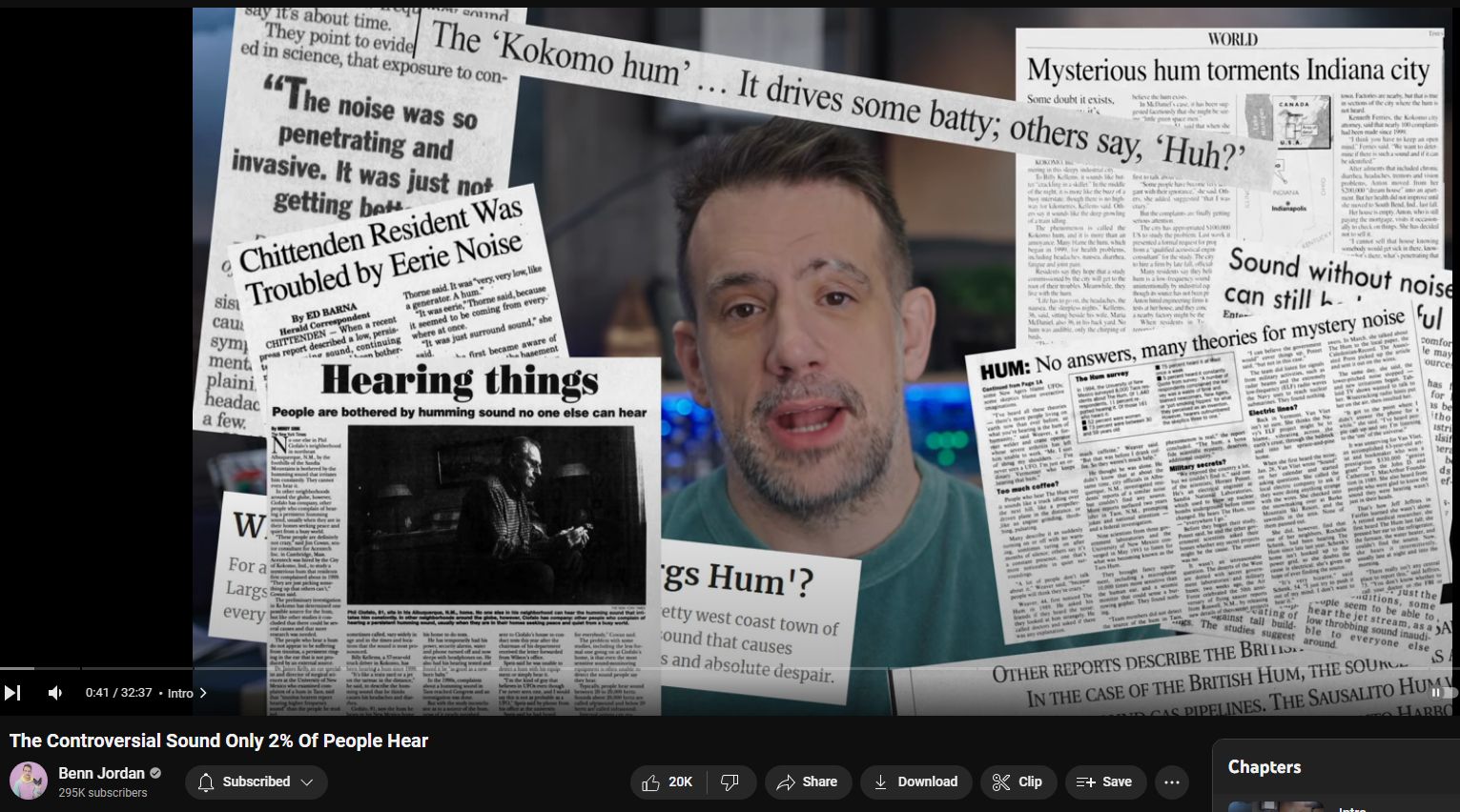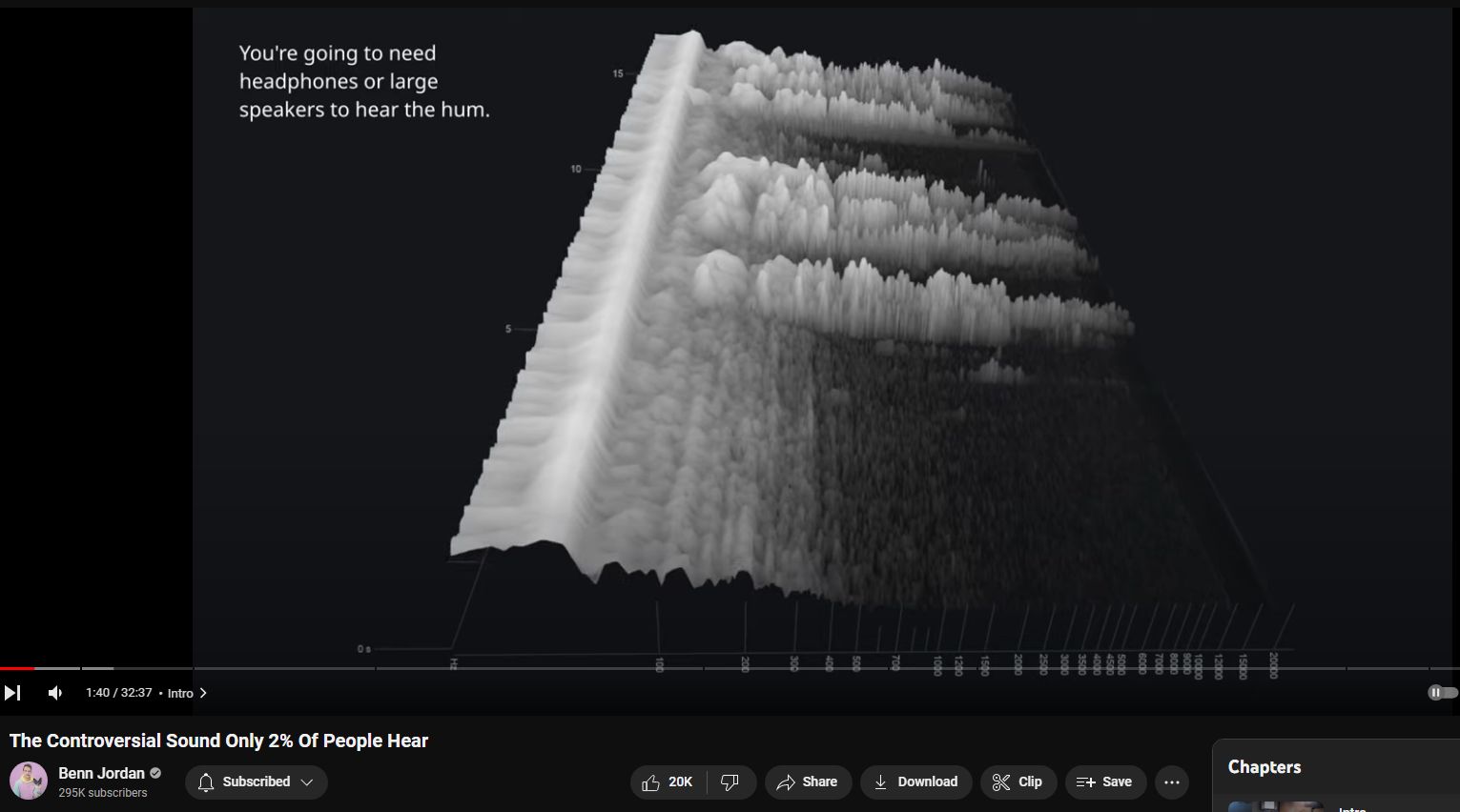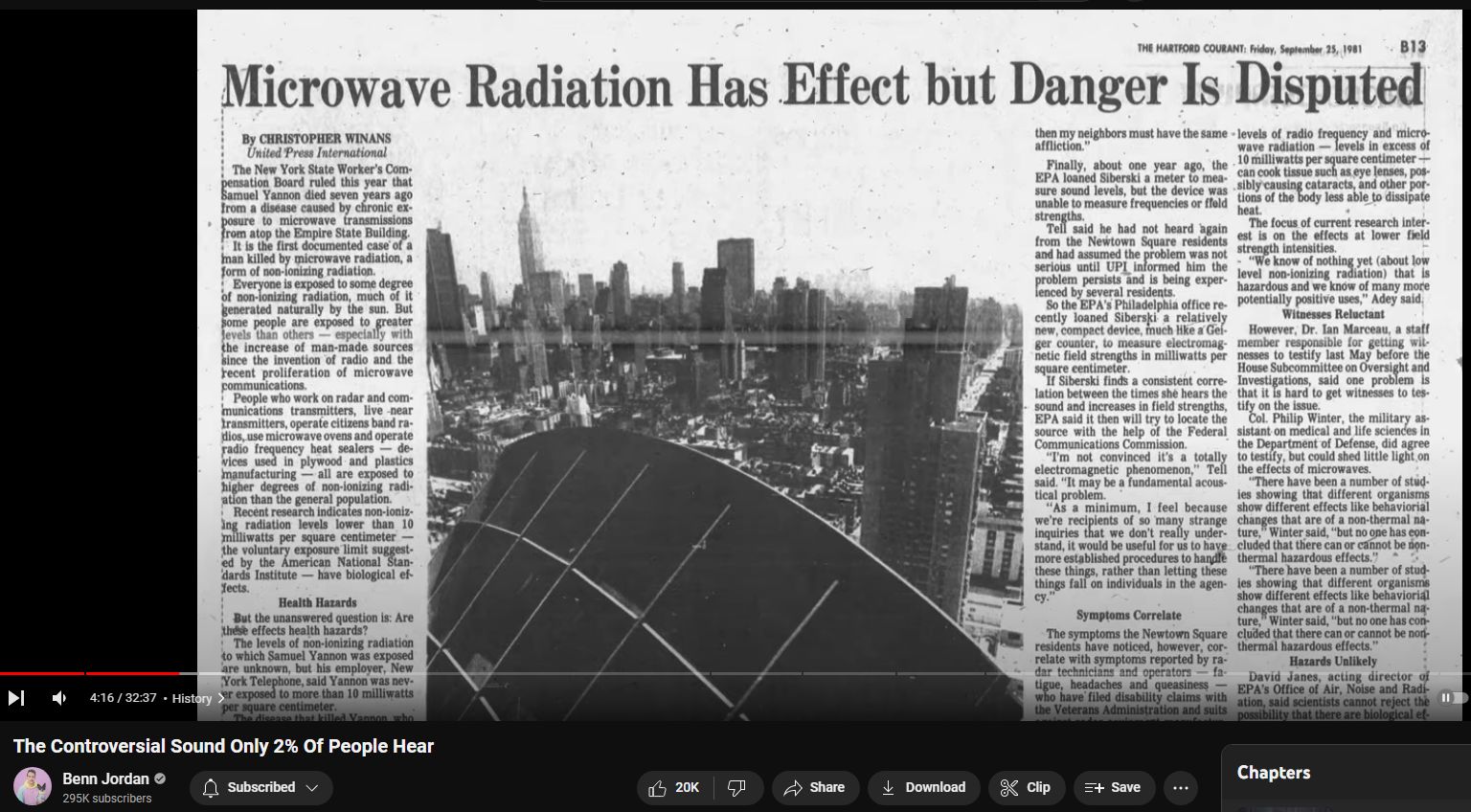Rijke Pressure, Taos Hum, Subsonica – The Controversial Sounds Only 2% Of People Hear
1st real trace / published information about persistent low-frequency environmental hum — 1973:

Loudness and annoyance due to low-frequency sound, such as the Taos Hum or other similar phenomena, can have significant impacts on individuals and communities. Here’s how:
1. Perceptual Effects: Low-frequency sound waves can be perceived differently by individuals compared to higher-frequency sounds. Even at relatively low intensity levels, low-frequency sounds can be perceived as louder or more intrusive due to their ability to travel long distances and penetrate through building structures.
2. Physical Effects: Prolonged exposure to low-frequency noise can lead to physical discomfort, including headaches, fatigue, and sleep disturbances. These effects can be particularly pronounced at night when ambient noise levels are lower, making the low-frequency sound more noticeable and disruptive.
3. Psychological Effects: Persistent low-frequency noise can also have psychological effects on individuals, including increased stress, anxiety, and irritability. The constant presence of the noise can lead to feelings of helplessness and frustration, impacting overall well-being and quality of life.
4. Community Impact: In communities affected by low-frequency noise, the perceived loudness and annoyance can vary among residents based on factors such as proximity to the noise source, individual sensitivity, and existing ambient noise levels. However, when a significant portion of the population experiences annoyance or discomfort due to the noise, it can lead to community unrest, public protests, and demands for action from local authorities.
5. Regulatory Concerns: The impact of low-frequency noise on human health and well-being has prompted regulatory agencies in some countries to establish guidelines and standards for acceptable noise levels. These regulations often include provisions for assessing the potential impact of low-frequency noise on sensitive receptors, such as residential areas or hospitals, and implementing mitigation measures if necessary.
6. Mitigation Strategies: Mitigating the loudness and annoyance associated with low-frequency noise can be challenging, especially if the source of the noise is unclear or difficult to control. However, some mitigation strategies may include soundproofing measures for affected buildings, adjusting operational practices for noise-emitting activities, or implementing noise barriers or buffers between the noise source and sensitive receptors.
Overall, addressing loudness and annoyance due to low-frequency sound requires a multi-faceted approach that considers the physical, psychological, and community impacts of the noise, as well as practical measures to mitigate its effects and protect human health and well-being.

The Rijke tube, also known as the Rijke’s pipe or Rijke’s tube, is a device used to demonstrate the generation of sound via a thermoacoustic effect. The principle behind the Rijke tube involves creating a standing wave pattern within a tube that is heated at one end. This standing wave generates audible sound.
The operation of the Rijke tube can be explained as follows:
1. Tube Design: The Rijke tube consists of a closed tube with a heating element at one end and an open end at the other. The tube is typically made of metal or glass.
2. Heating Element: The heating element, often a wire coil or a burner, is located at the closed end of the tube. When activated, the heating element raises the temperature of the air inside the tube, creating a temperature gradient along the length of the tube.
3. Standing Wave Formation: As the air inside the tube heats up, it expands and creates pressure waves. These pressure waves reflect off the closed end of the tube and interfere with each other, resulting in the formation of a standing wave pattern within the tube.
4. Sound Generation: The standing wave pattern within the tube produces audible sound waves. The frequency of the sound wave is determined by the length of the tube and the speed of sound in the air.
5. Thermoacoustic Effect: The sound generation in the Rijke tube is a result of the thermoacoustic effect, where acoustic waves are generated by temperature gradients in a gas. As the air inside the tube heats and cools cyclically, it creates pressure oscillations that manifest as sound waves.
The Rijke tube serves as a simple and effective demonstration of the thermoacoustic effect and has applications in educational settings for teaching concepts related to acoustics and thermodynamics. Additionally, it has been used in research to study the fundamental principles of sound generation and propagation in thermoacoustic systems.
Low-Frequency Noise Sufferers Association

The Taos Hum refers to a mysterious low-frequency sound phenomenon reported by residents of the town of Taos, New Mexico, and some other locations around the world. Described as a persistent, low-pitched humming or buzzing noise, the Taos Hum has been the subject of investigation and speculation for decades.
Here are some key points about the Taos Hum:
1. Characteristics: The Taos Hum is typically described as a low-frequency sound, often likened to the noise made by idling engines, distant machinery, or low-frequency pulsations. However, no specific source or cause has been definitively identified.
2. Reports and Observations: Residents of Taos, New Mexico, began reporting the phenomenon in the early 1990s. Since then, similar reports have emerged from other locations worldwide, including the United Kingdom, Australia, and Canada. The Hum is often described as a persistent, intrusive noise that can be heard indoors and outdoors, usually at night.
3. Variability: The intensity and frequency of the Taos Hum can vary among individuals, with some people reporting hearing it consistently while others are only intermittently aware of it. Some individuals are more sensitive to low-frequency sounds than others, which may contribute to differences in perception.
4. Investigations: Despite numerous investigations by scientists, government agencies, and independent researchers, the exact cause of the Taos Hum remains unknown. Various hypotheses have been proposed, including natural sources such as geological processes, atmospheric phenomena, or even biological sources like insect activity. Additionally, human-made sources such as industrial machinery, electrical infrastructure, or military operations have been considered.
5. Psychological and Physiological Factors: Some researchers have suggested that psychological and physiological factors may play a role in the perception of the Taos Hum. These factors could include heightened sensitivity to certain frequencies, psychological stress, or hyperacusis (increased sensitivity to normal environmental sounds).
6. Community Impact: The Taos Hum has had a significant impact on affected communities, leading to public concern, community activism, and demands for further investigation. However, efforts to identify and mitigate the source of the phenomenon have so far been inconclusive.
In summary, the Taos Hum is a mysterious and persistent low-frequency sound phenomenon reported by residents of various locations worldwide. Despite extensive investigation, its origin and cause remain uncertain, leaving it as an intriguing and unresolved mystery.
from the comments
